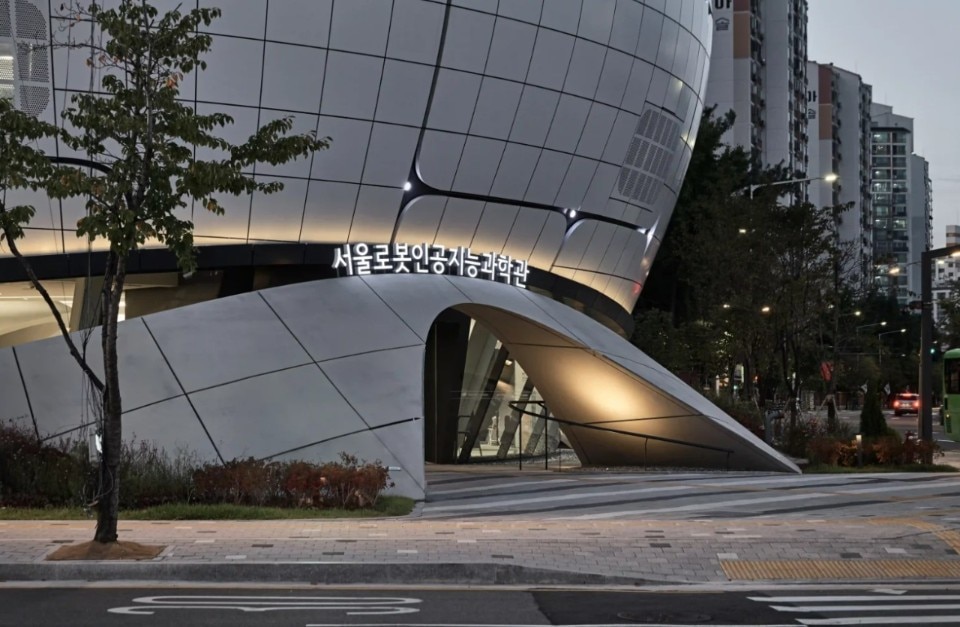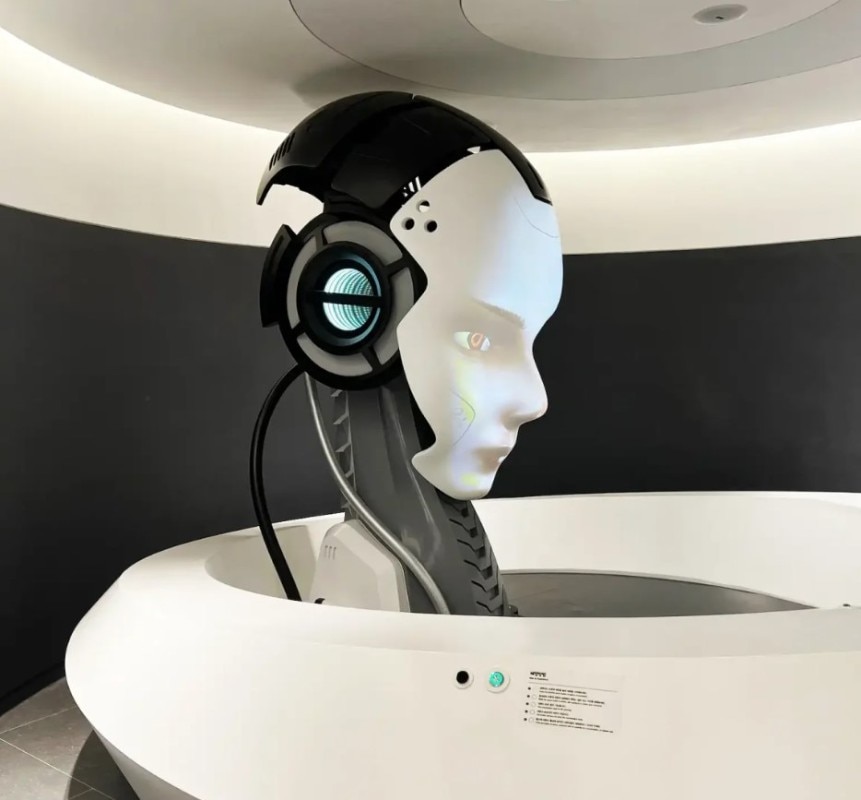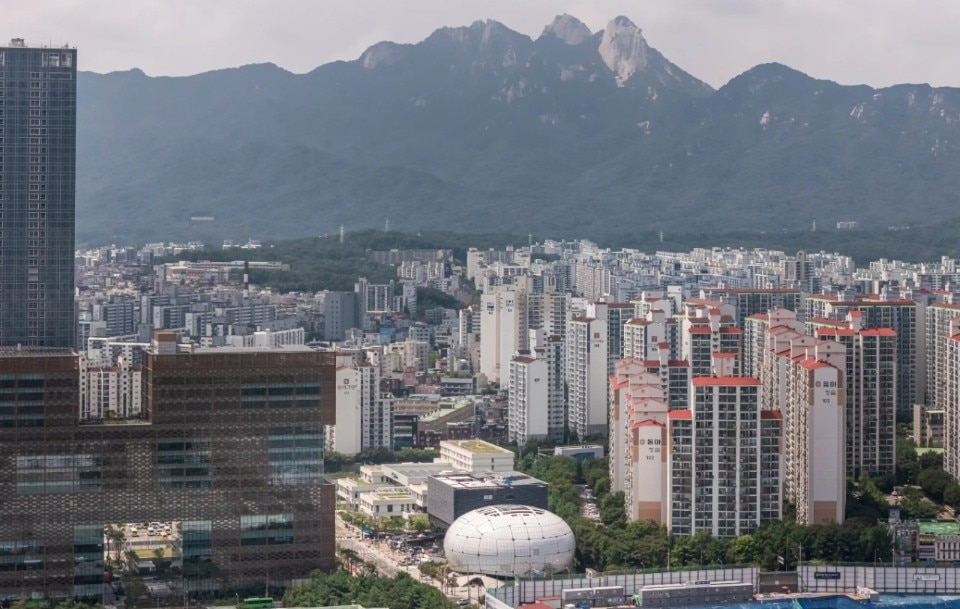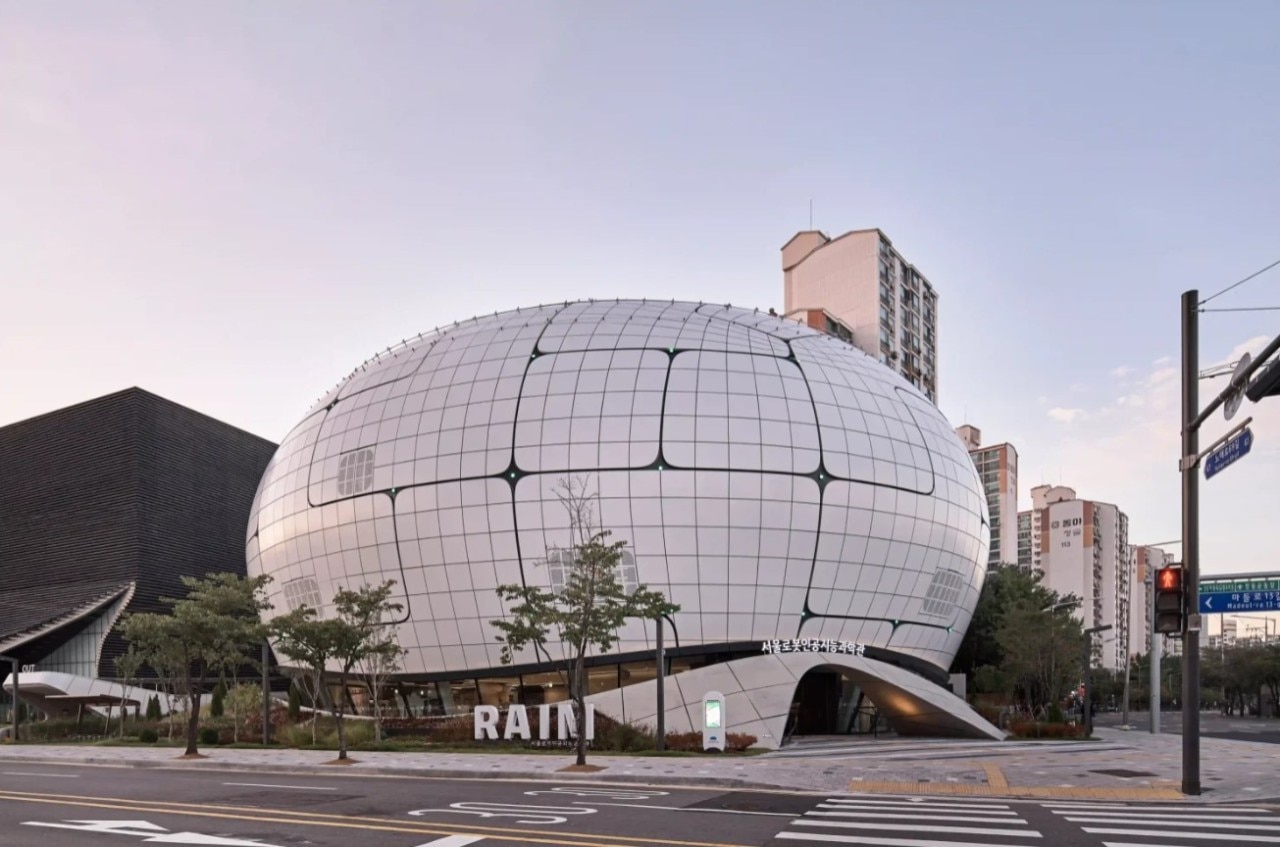In an age marked by the rise of robots and, in particular, artificial intelligence, trying to encapsulate the technological evolution of the past decades in a museum seemes inevitable. It may also be no coincidence that this museum – named RAIM (Robot and AI Museum) – emerged in Seoul, South Korea, the capital of the country with the world's highest robot density.
Opened last October and designed by the Turkish firm Melike Altinisik Architects (Maa), RAIM is the first museum exclusively dedicated to the robotics and artificial intelligence technological revolution. This uniqueness is expressed through its futuristic aesthetic, characterized by a spherical and dynamic shape that appears as a shell ready to hatch, suiggesting fluidity and continuous evolution.

This design choice was intentional: Architect Melike Altinisik conceived RAIM as a living exhibition, showcasing the very technologies that made its construction possible. The outer spherical structure was built using numerically controlled laser machines and technologies such as robotic welding, often employed in the aerospace industry.
The extensive use of robots – including partially autonomous ones – in the construction of RAIM is undoubtedly symbolic. This museum, essentially a robot itself, seems to have built itself, utilizing the most innovative building technologies.

The four-story interior – reminiscent of a gleaming white spaceship – blends seamlessly with the technologies embedded in its walls, further emphasizing that RAIM is not just a display of technology but technology itself. This is reflected in the interactive displays and integrated smart technology, such as innovative orientation design by SB Environment and landscape lighting by AU Landscape. The surrounding greenery, partially designed by Gio Landscape Architect, underscores the museum's commitment to sustainability.
This museum, essentially a robot itself, seems to have built itself, utilizing the most innovative building technologies.
“Dynamic” and “constantly evolving” are perhaps the two key terms that best describe RAIM’s essence. It allows visitors not only to interact with robots – starting with those in charge of welcoming guests – but also to witness their evolution in real-time. And what about artificial intelligence? RAIM showcases the advancements in this field that are defining the 21st century, from well-established predictive systems, such as those that autonomously detect computer fraud attempts, to the progression of smart speakers and generative artificial intelligence. RAIM's primary goal is educational, offering people an in-depth understanding and a closer look at these technologies that are rapidly shaping our society.

Located near Seoul's Startup and Cultural Industrial Complex, RAIM also aspires to become an economic and cultural hub for the city's science and technology sector with a vision of establishing a network of interconnected technology museums in the future.
How to structure a museum to tell the story of an ever-evolving world – one in which today’s cutting-edge breakthroughs may become commonplace within a few years, and perhaps even obsolete in a decade? To address this challenge, RAIM’s interiors are organized as flexible, open spaces that can be easily adapted and reimagined. This modular approach enables the museum to evolve alongside the very technology it seeks to preserve and showcase.

After the countless exhibitions dedicated to robotics and artificial intelligence – such as Robotland held in Milan in 2023 – the rapid integration of technology in established science museums like Tokyo's Miraikan, and the rise of innovation-centered institutions like the Museum of the Future in Dubai, RAIM’s debut highlights how the world of technological and digital innovations has undoubtedly become a defining cultural narrative of our time.

The details of minimalist architecture
The new Schüco LivIng Free Light system is a PVC window frame that minimises the exposed section of the window frame, enlarges the glazed area and creates an elevation with an essential character.










